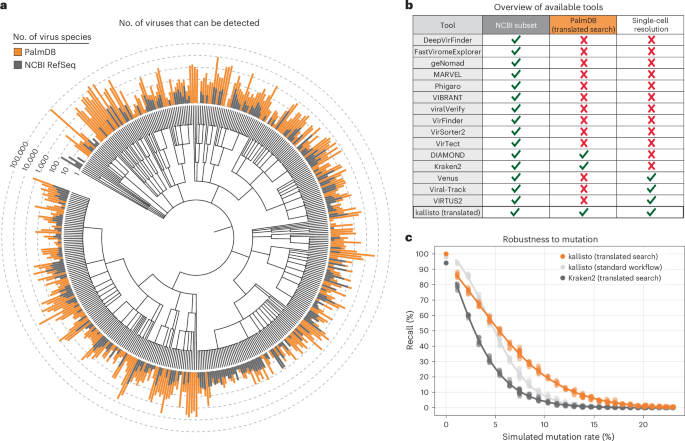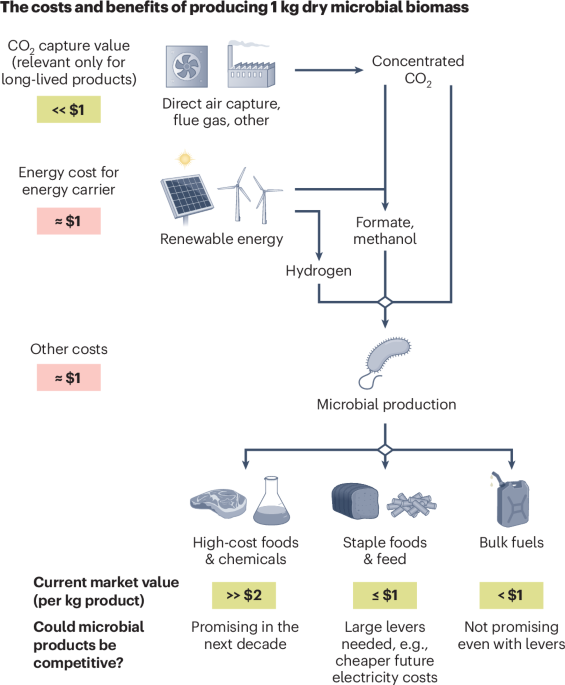Now Reading: Single-Cell Analysis Uncovers Novel Viruses Linked to Host Gene Expression Shifts
-
01
Single-Cell Analysis Uncovers Novel Viruses Linked to Host Gene Expression Shifts
Single-Cell Analysis Uncovers Novel Viruses Linked to Host Gene Expression Shifts

Quick Summary
- researchers globally are studying viral diversity and emerging infectious diseases.
- Studies like Anthony et al.(2013) focus on estimating unkown viral diversity in mammals, crucial for predicting zoonotic threats.
- Jones et al. (2008) analyze global trends in infectious diseases, highlighting areas of concern in disease emergence worldwide.
- Mollentze et al. (2021) aim to identify and prioritize potential human-infecting viruses using genome sequence analysis to mitigate future outbreaks.
- Several studies link viruses to life-altering conditions; Schiller & Lowy explore virus-related cancers (2021), Martens & Accornero address myocarditis and heart failure due to viral infections, while Cairns et al. discuss alzheimer’s potential connections with varicella-zoster virus reactivation (2022).
- Emerging discoveries also point towards Epstein-Barr virus being linked with multiple sclerosis cases globally (Bjornevik et al., 2022).
- larger-scale analysis tools by Camargo et al. (IMG/VR v4,2023) provide resources for uncultivated virus genome studies,pushing teh boundaries of virology research.
To access these references: Read More
Indian Opinion Analysis
As India progresses toward enhancing public health infrastructure and combating zoonotic threats, such advancements in understanding viruses-notably those leading to major neurodegenerative disorders or chronic illnesses-have deep implications for India’s healthcare priorities. Considering its vast biodiversity and prevalence of zoonoses, the ability to anticipate emerging pathogens using genomic tools could prevent large scale outbreaks.
Moreover, addressing diseases like Alzheimer’s or multiple sclerosis associated with latent viruses is relevant given India’s growing elderly population burdened by noncommunicable illnesses needing robust diagnostic frameworks aligned with scientific insights on these links.
International collaboration becomes pivotal as data-driven approaches integrate findings like those mentioned above into predictive models applicable within local ecosystems unique to South Asia’s geography.Quick Summary:
- The provided raw text appears to be a detailed list of scientific references and studies related to virus genomics, metagenomic data processing, single-cell RNA sequencing, and tools or technologies for identifying viral sequences.
- Topics covered include applications of deep learning in virology, global genomic surveillance networks for viruses, and methodologies such as FastViromeExplorer and VirFinder for research in metagenomics.
- References span various prestigious publications like Nature Biotechnology, Bioinformatics, Microbiome, highlighting advancements in microbial virus annotation (VIBRANT) and prophage sequence analysis (Phigaro).
- Key tools mentioned include geNomad, MARVEL, Metaviral SPAdes (for assembly of viral genomes), VirSorter2 (DNA/RNA virus classification), among others.
Indian Opinion Analysis:
The exploration of cutting-edge genomic techniques underscores the growing importance of virus surveillance as a global health priority. For India specifically-a country with vast biodiversity-a robust investment into these technologies could revolutionize public health responses to viral outbreaks. Tools that decode complex microbial environments can bolster India’s capacity to handle zoonotic threats effectively while advancing its scientific footprint internationally in genomics research.
India’s proactive participation or collaboration with global initiatives like those targeting virus genomic surveillance may also pave the way for more predictive models on potential pandemics within the region.Neutral perspective highlights both the opportunities these studies bring and the necessity for ethical implementation including data privacy considerations.
Read MoreQuick Summary:
- Researchers and institutions globally are combining computational techniques, including artificial intelligence (AI), to improve virus detection using advanced sequencing tools such as RNA-seq data.
- Key studies have developed new tools like VirSorter2, Venus, and VIRTUS to detect DNA/RNA viruses more accurately while also documenting virus integration sites.
- These technologies show significant promise in uncovering latent or hidden virospheres and improving metagenomic analyses.
- While the scientific advances focus on single-cell analysis for various applications such as COVID-19 infection profiles or microbial community insights, no explicit narrative is provided about India-specific involvement within the source material.
Indian Opinion Analysis:
India stands at a critical juncture where advancements in virus detection methodologies could play a transformative role in public health capabilities. As one of the largest hubs for software progress and biotechnology research, India’s expertise can integrate AI-driven pipelines like those mentioned above into national labs addressing emerging viral threats. Such technologies may strengthen India’s ability to tackle outbreaks through rapid genomic mapping while contributing to global knowledge dissemination efforts.
Efforts to combine AI with sequencing will be instrumental not just in tackling region-specific health issues but also enhancing surveillance systems crucial for early warning mechanisms. However, equitable access needs alignment ensuring that benefits reach smaller labs within India-not residing solely at elite research institutions.
Read more: Google ScholarQuick Summary
- The provided text primarily lists references and citations across various scientific articles related to topics such as mRNA-sequencing, single-cell profiling, SARS-CoV-2 viral dynamics, and contamination in genomic data.
- Key research areas include detecting higher viral loads in morning tests, profiling infectious diseases like Ebola and COVID-19 at the cellular level, RNA sequencing methodologies, inaccuracies in microbiome studies due to data errors, and issues of contamination impacting genomic databases like GenBank.
Indian Opinion Analysis
From an Indian perspective on global scientific advancements captured here: India continues to play a key role as both a contributor and beneficiary of these innovations. For example, improving testing accuracy for infections (e.g., COVID-19) could bolster disease surveillance in India’s densely populated regions. Meanwhile, addressing genomic contamination challenges has implications for Indian biotechnological efforts aiming at precision medicine or microbiome studies.The nation stands poised to integrate such findings into its healthcare systems while contributing expertise via ongoing research collaborations with institutions worldwide.
Read more: [Source Provided]Quick Summary
- The news article discusses recent scientific advances related to genome mining, revealing pervasive invasions of retroviruses into vertebrate genomes.
- Research techniques such as sequencing tools and metagenomics were applied to understand viral dynamics across species, including primates.
- Various referenced studies focus on viral infections, their genomic impacts, and the biomedical relevance for human applications.
- These findings contribute valuable data for improving disease management strategies and understanding zoonotic potentials of viruses.
Indian Opinion Analysis
Understanding the invasion of retroviruses into vertebrate genomes carries significance for India’s bioinformatics and medical research sectors, which are rapidly advancing. This data could enhance India’s preparedness against infectious diseases by contributing to vaccine development or antiviral strategies specific to the region’s needs. With a global rise in zoonotic diseases,such findings underscore the urgency of cross-species genomic studies that India can integrate with its existing frameworks in wildlife conservation and public health policy. Collaboration among Indian institutes and global entities would also enable leveraging these insights effectively.
Read more: Articlequick Summary
- the article primarily focuses on advancements in scientific research tools used for genome analysis,metagenomics,microbiome studies,and protein alignment.
- Key topics covered include the development of software suites like MMseqs for clustering protein sequences, Kraken for metagenome analysis, and Bowtie 2 for fast gapped-read alignment.
- Other highlights include studies on gut microbiome patterns across 168,000 global samples and simulation tools like Mutation-simulator.
- References from databases like PubMed and Google Scholar are provided to support the discoveries.
Indian Opinion Analysis
The advancements discussed in genomic research tools signify transformative progress that India can leverage to enhance its bioinformatics capabilities. With a growing emphasis on healthcare innovations such as genomics-based treatments or microbial ecosystem research (e.g.,gut health),these cutting-edge methodologies offer ample potential in public health applications. India’s strong IT background serves as a critical advantage in integrating computational advances into local bio-research ecosystems. Future adoption of these resources could enable breakthroughs tailored to Indian demographic data while aligning with global standards of precision medicine.
Read more: uids=36171387″>PubMed | PubMed Central | Read More

























